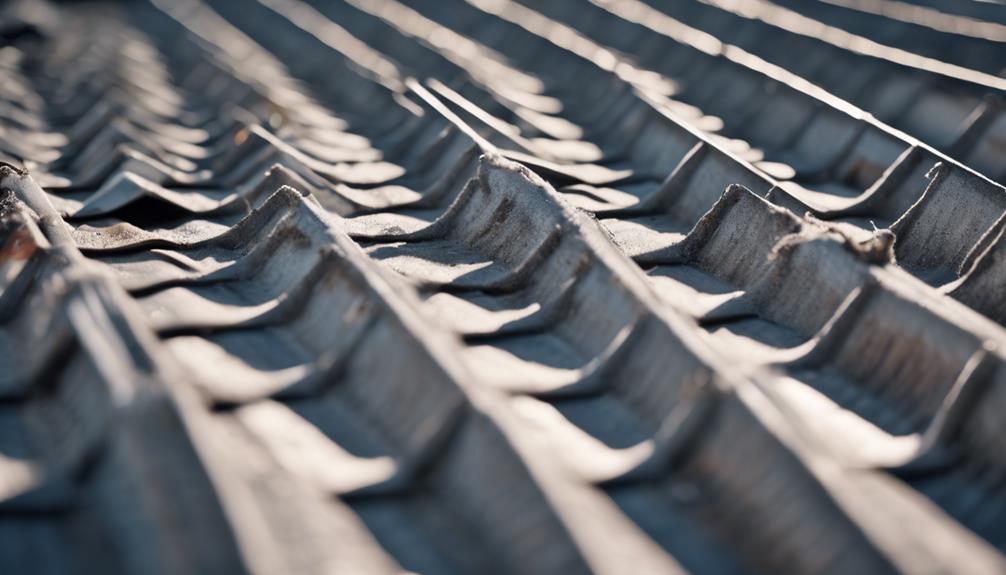How to Identify Asbestos In Roofs?
Peel back the layers of mystery surrounding asbestos in roofs and discover the crucial pointers for safeguarding your well-being.
Properly identifying asbestos in roofs is crucial for maintaining a safe environment. Given the common use of asbestos in construction materials, recognizing its presence is vital for ensuring safety.
By understanding the risks and detection methods for asbestos in roofing, individuals can effectively mitigate health hazards. Stay informed about the key signs and strategies for detecting asbestos in roofs, and take proactive steps to protect against its harmful effects.
Why Is Proper Identification and Management of Asbestos in Roofs Important?
Understanding asbestos in roofs involves recognizing its characteristics, risks, and potential hazards. Asbestos is a naturally occurring mineral known for its heat resistance, strength, and insulating properties, which led to its widespread use in construction materials, including roofing tiles and shingles, in the past.
However, prolonged exposure to asbestos fibers can cause severe health issues such as lung cancer, asbestosis, and mesothelioma. When asbestos-containing roofing materials deteriorate or are damaged, they can release microscopic fibers into the air. Inhalation of these fibers can lead to lung inflammation and scarring over time.
It is crucial to handle asbestos-containing roofing materials with care to prevent fiber release and associated health risks. Proper identification, assessment, and management of asbestos in roofs are essential for ensuring the safety of both occupants and workers during renovation or demolition activities.
What Are the Signs of Asbestos in Roofing Materials?
To identify asbestos in roofing materials, look for specific visual cues and material characteristics that may indicate its presence:
- Fibrous Appearance: Roofing materials containing asbestos often display a fibrous or layered texture, resembling compressed fibers or small bundles.
- Grayish or Bluish Color: Asbestos-containing roofs may have a distinct grayish or bluish tint due to the asbestos fibers mixed into the material.
- Age of the Roof: Asbestos was widely used in roofing materials before the 1980s, so if the roof is older and hasn’t been replaced, there’s a higher chance it may contain asbestos.
How to Identify Asbestos in Roofs?

To detect asbestos in roofing materials, perform a detailed visual inspection focusing on specific indicators and material characteristics:
- Age of Installation: Check if the roofing materials were installed before the 2000s, as asbestos was commonly used in construction prior to its ban due to health risks.
- Material Appearance: Look for materials that are corrugated, have a cement-like texture, or are coated with a protective sealant.
- Color and Shape: Asbestos-containing roofs may be grey or bluish and often have a flat or low slope.
- Condition: Be cautious of weathered, damaged, or deteriorating materials, as these could release asbestos fibers into the air.
If you suspect asbestos, do not disturb the material. Instead, consult with professionals for testing and removal. Visual identification alone is not sufficient; accurate confirmation requires asbestos testing by accredited experts.
Why Is Professional Inspection Important in Dealing with Asbestos in Roofs?
Professional inspection by accredited experts is crucial when dealing with suspected asbestos-containing roofing materials to ensure accurate identification and safe removal. Here are three key reasons why professional inspection is essential:
- Accurate Identification: Trained professionals can distinguish between various roofing materials, accurately determining which ones contain asbestos. This precision is critical for devising effective management strategies.
- Safety Measures: Experts follow strict safety protocols during inspections to prevent asbestos fibers from becoming airborne, thereby protecting the health of occupants and workers.
- Legal Compliance: Certified inspectors are knowledgeable about regulations regarding asbestos management and disposal. Hiring accredited professionals ensures adherence to relevant laws and helps avoid potential fines or legal issues.
Relying on professionals for asbestos inspections provides confidence in the accuracy and safety of the identification process.
What Steps Are Involved in the Process of Identifying Asbestos in Roofing Materials?

Ensuring accurate identification of roofing materials containing asbestos is crucial for effective management and safe removal.
Accurate identification is vital because improper handling of asbestos-containing materials poses serious health risks. Thus, relying on certified asbestos inspectors and accredited laboratories is essential for precise identification and making informed management decisions.
Frequently Asked Questions
Can Asbestos in Roofs Pose a Health Risk to Individuals Living or Working in the Building?
Asbestos in roofs can pose a significant health risk to individuals. Inhalation of asbestos fibers can lead to serious respiratory issues, including lung cancer and mesothelioma. Proper identification and removal by certified professionals are essential for safety.
What Should Be Done if Asbestos Is Found in Roofing Materials During a Renovation or Repair Project?
In the event of identifying asbestos in roofing materials during a renovation or repair project, it is essential to halt work, seal off the area, and engage licensed professionals for safe removal and disposal following regulatory guidelines.
Are There Any Regulations or Guidelines That Need to Be Followed When Dealing With Asbestos in Roofs?
Regulations and guidelines mandate proper handling of asbestos-containing materials in roofs. Compliance with local, state, and federal laws is important. Safety protocols, including testing, removal, and disposal procedures, must be followed to guarantee the health and well-being of individuals.
How Can Homeowners or Building Owners Safely Remove Asbestos From Their Roofs?
To safely remove asbestos from roofs, homeowners or building owners should hire licensed asbestos abatement professionals. These experts have the training, equipment, and experience necessary to safely contain, remove, and dispose of asbestos-containing materials in compliance with regulations.
Is There a Way to Protect Against Potential Asbestos Exposure While Working on or Near Asbestos-Containing Roofing Materials?
To protect against potential asbestos exposure while working on or near asbestos-containing materials, individuals should wear appropriate personal protective equipment, guarantee proper ventilation, use wet methods to minimize dust, and follow established safety procedures for handling asbestos-containing materials.